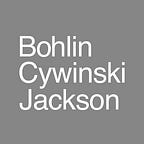Rethinking Public Spaces in Seattle
On Thursday, February 20, we celebrated our newest monograph Gathering, with a conversation about rethinking public spaces in Seattle. We were joined by a panel of experts, the Seattle design community, and members of the public at Block 41.
Gathering focuses exclusively on our institutional, civic, and commercial work and exemplifies how architecture has the power to bring people together to engage in new ways, generate ideas, share their passions, and build communities. Our Year of Gathering series features provocative conversations inspired by our work and the connections we foster.
Like many urban centers, Seattle is faced with rapid densification and complex development issues. Large-scale projects, like the removal of the Viaduct, have offered a unique opportunity for the city to positively transform its urban fabric while grappling with infill and growth. Inspired by previous discussions and work with Su Development, like Soma Towers, where a substantial amount of private development has been dedicated to public space, we extended the exploration to new and alternate approaches to public spaces in Seattle.
The panelists included Bohlin Cywinski Jackson Principal, Patreese Martin; Lisa Picard, CEO and President of EQ Office; Benjamin de la Pena (Benjie), a board member at Project for Public Spaces; and Barb Swift, a founding member of Swift Company, and Peter Miller moderated the discussion.
At the heart of this conversation were questions of trust, connection, community, and communication. There are so many driving forces in how public spaces develop — the innate instincts of those who inhabit it or could inhabit it; who controls it (or is perceived to control it); how we measure the success of space and how that informs the future space development.
“We want to design spaces that reward the curious. We don’t gather materials; we gather people.”
— Patreese Martin, Principal, Bohlin Cywinski Jackson
As the President and CEO of EQ Office, a company owned by Blackstone, Lisa brought the perspective of a developer, but with an eye toward moving past legacy assumptions about what makes projects successful and valuable. Lisa began by speaking to the need to create spaces where we can deepen our connections and sense of community, “we need to create spaces with depth — where creativity and innovation are born.”
Benjie picked up this thread, talking about our continued need for human connection — many work remotely but spend time in coffee shops due to our desire for casual relationships and proximity to others. The public realm is where we encounter people. As the first-ever Chief of Strategy and Innovation at the Seattle Department of Transportation (SDOT), Benjie led a study on vibrancy and how people use the right-of-way as public space; “we studied the role of public spaces in human engagement.” The most data the city has is about the movement of vehicles and the way we build our public streets preferences the movement of goods rather than the life of the city. Barb Swift suggested reframing this metric and pointed to Auckland, New Zealand, where the city provided a masterplan that asks the populace, “do you love me?” suggesting the city can be a place of joy.
When the conversation turned to ways to reframe measures of success in our public spaces, Lisa suggested our commercial buildings are becoming less of a statement to the corporation, but rather a statement to the community, pushing toward a balance of public and private space that allows the community to thrive. More often, we’re looking to the hospitality sector for examples of great spaces that invite many to gather — formally and informally. Lisa discussed a development project with several public amenities embedded, and the team quickly realized they needed to teach people how to use them. After they offered classes and programming in the spaces, demand increased, and the amenities became regularly occupied.
The notion of programming public space and teaching the community how to use it indicates we need to build trust. How do people know where they are welcome? How do we communicate that across cultural lines? In the visioning and planning stage of urban development, we often turn to retail to activate a building where it meets the street. However, retail is transactional, and there is a degree of permission required to use it. For public space to be truly public, there can’t be gatekeepers. Along this theme, Barb Swift raised a concept she calls “borrow, not buy,” referring to the ethos of the public library, where everyone feels invited into a place, and she asked a fundamental question, “Is this a place you would trust being in and where the community will grow?”
The conversation continued to raise questions, challenges, and spark desire for the city to be brave and envision a better future. We are so honored to have been joined by this group of experts and everyone in the room. Thank you for considering the future of public space in Seattle with us.
Up Next: If you’re in the Bay Area, join us for Building Community and the Contemporary Workplace on March 19 at the Kaiser Family Foundation offices for a conversation moderated by Tom DiRenzo, featuring Senior Associate Helene Gregoire; Mollyann Brodie of Kaiser Family Foundation; Georgia Collins of CBRE; and Blaire Kravitz of Square. On April 23, we’ll be at Power Plant Productions in Philadelphia for a conversation about reclaiming community moderated by Rasida Ng, Associate Professor and Chair of Architecture and Environmental Design at Temple University.
